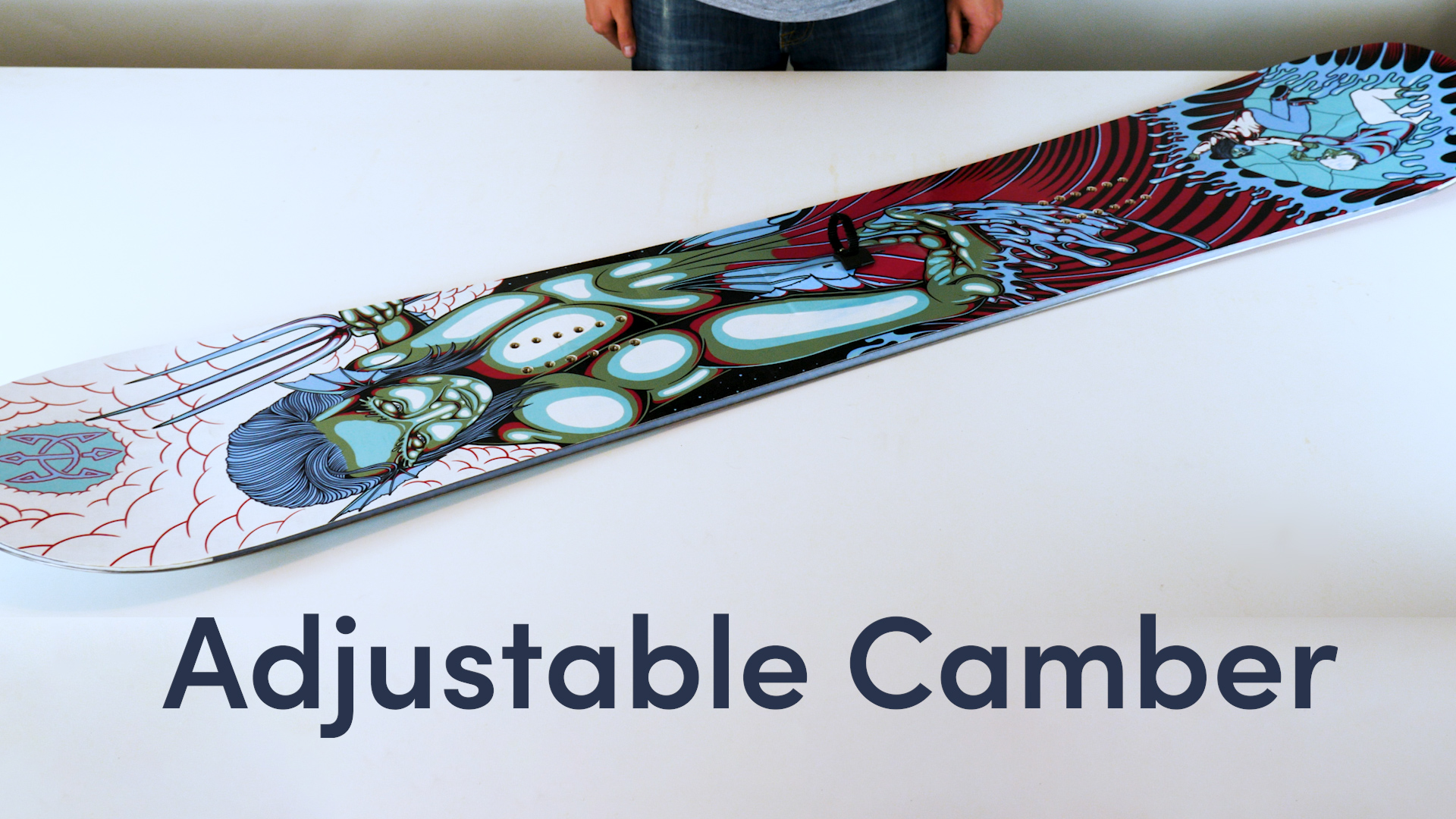Learn how to properly tune and maintain your camber adjustment.

Have other questions?
Camber Configurations
Full Camber
For full camber, completely loosen both screws until your indicator stops moving, then slightly tighten the screws so that they do not vibrate loose. This setup will give you the best edge hold, hands down.
Mid Camber
Start to tighten each screw from the full camber configuration until each one is somewhere mid-way between the first two indicators. This configuration gives excellent rebound on turns, but will prevent catching edges better than the full camber configuration.
Flat
For a flat setup, tighten both screws until your indicator is on the center line and use a flat surface to get it perfect. This is a great versatile configuration that offers a balance between responsiveness and forgiveness.
Full Rocker
For full rocker, tighten both screws until the red mark touches the indicator closest to the center of the board or you feel resistance. Be sure not to over tighten. This setup is the most forgiving and will help you skip right over the choppiest conditions.
Mid S Curve
Tighten your rear screw about halfway up to the middle indicator to get a nicely balanced camber. Tighten the front screw past the middle indicator until you have the desired front end lift. This directional setup could benefit from an offset stance and is great for when you are in thicker snow, but still need to make very quick transitions.
Full S Curve
Tighten the front screw to the limit and loosen the rear screw to full camber. This setup may benefit from setting your whole stance or rear foot slightly towards the back. This configuration allows you to really hook your tail into deep powder turns, but still keep your nose above the snow.
Want a closer look?
Now you see what the board is capable of, but maybe you want a closer look at what’s going on inside the board. Learn more on our tech page.



 Download the User Manual
Download the User Manual